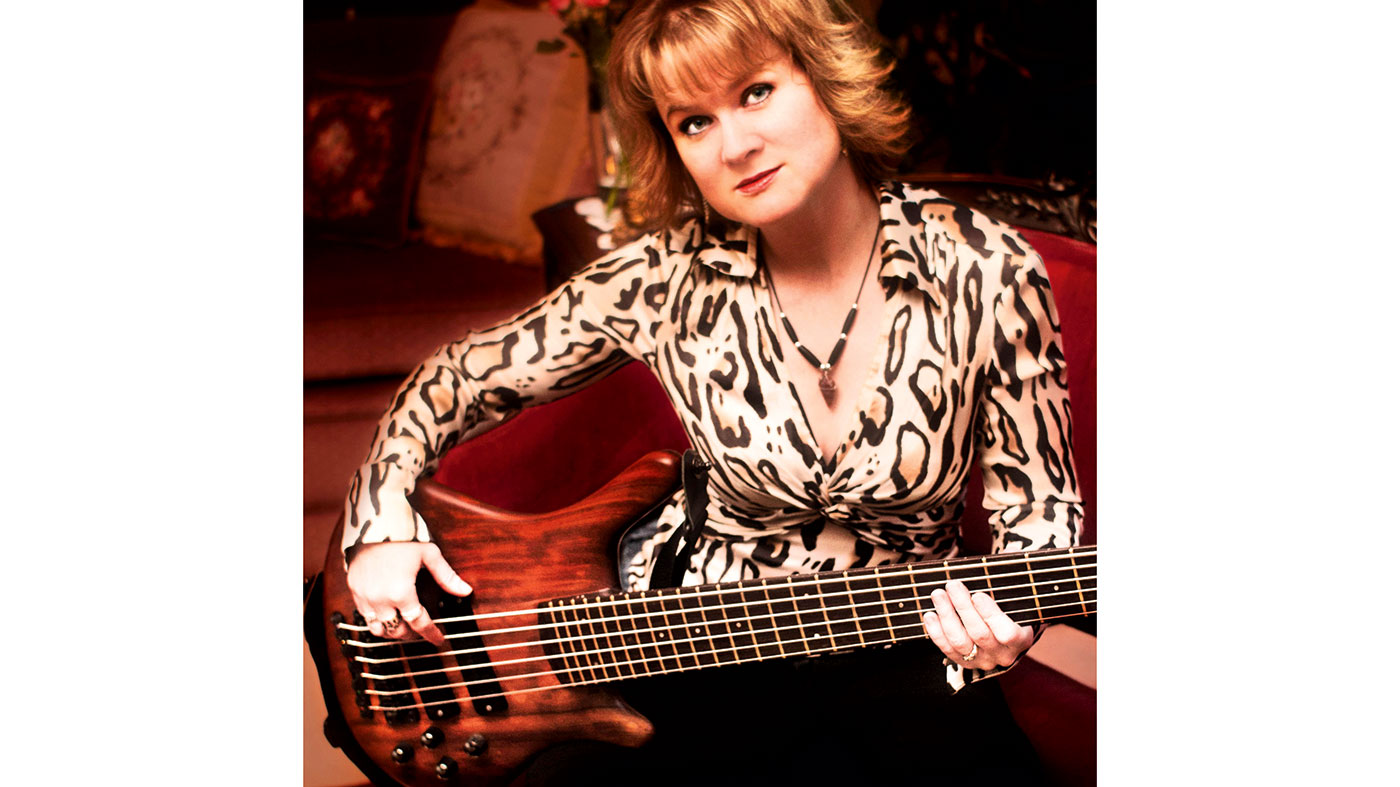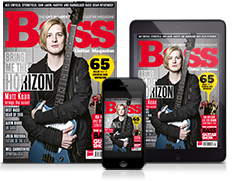Lisa Mann: “I was always attracted to the sound of the bass, whatever I was listening to”
The blues bassist and singer-songwriter on bringing technical chops to the long-established style

Lisa Mann is a force to be reckoned with, having recorded and toured original blues music since the early 2000s and having played bass to fiendish levels of complexity since long before that.
Her resume speaks for itself, with Blues Music Awards in 2015 and ’16, eight Muddy Waters Awards from the Cascade Blues Association and Blues Blast’s Sean Costello Rising Star Award. That’ll put a curve in any mantelpiece. Recently Mann brought her blues trio to the UK, where we caught up with her for a chat about extended-range basses and other matters of importance.
How is the tour going, Lisa?
I’ve had a Tobias Killer B six-string for many, many years, and that’s my primary bass
“Great! The instigator was my guitarist Dudley Ross, who I met under the strangest of circumstances. I was performing in Las Vegas at an event called the Big Blues Bender, and we were about to pack out and leave, but I remembered that I’d promised my stepdad that I would make a bet on the craps table. I ran back inside to do it real quick and lose 20 bucks, and I ran into a UK radio DJ, Roger Allen. I did a little interview with him, and he told me about this British guitar player who brings American artists to the UK – and here I am, all because I went to make a last-minute bet. And by the way, I won 300 bucks!”
What gear are you using?
“I’ve had a Tobias Killer B six-string for many, many years, and that’s my primary bass. It plays like a racecar, with a nice flat neck, and I also have a Warwick Thumb six-string. That one weighs a lot so I don’t hang it around my neck as often as I would like to. It’s a studio bass. Both of them have Bartolini pickups, which I’m fortunate enough to endorse.”
Why play six-string basses?
Get the MusicRadar Newsletter
Want all the hottest music and gear news, reviews, deals, features and more, direct to your inbox? Sign up here.
“I’ve preferred a six-string since I was about 20 years old and I fell in love with that Warwick. Basically, I ran out of frets one day, because I was really into neo-classical metal and I was learning to play Paganini’s ‘Caprice No. 24’ [a heinously difficult violin piece – Ed] on a bass. I literally ran out of frets and thought ‘I’d better get some more strings!’ What’s been great about having those techniques after transitioning into blues is that, if I work in a three-piece scenario, I can play some double stops and chords while the guitar player is soloing.”
What else is in the signal chain?
“I don’t really use effects. I’ve been playing blues and blues-rock for a long time, and they’re not called for. If I want to get some distortion I’ll just change the gain structure and put too much signal through the amp. I’ve been using a Warwick LWA1000 head, which is small enough to pack with me if I need to do that. I have a modern heavy metal tone, because that’s my background, although a lot of people don’t know that’s where it comes from. I like a lot of midrange.”
I was a teenage metalhead
How did you get into bass?
“I’ve played bass since I was 11 years old. That’s where my heart is. I was always attracted to the sound of the bass, whatever I was listening to, whether it was movies or the radio or my parents’ records. The first record that really hit me was Deep Purple’s Machine Head, and the first song I ever learned to play was Space Truckin’.
The first record that really hit me was Deep Purple’s Machine Head, and the first song I ever learned to play was Space Truckin’
“I found a bass at a pawn shop in Charleston, West Virginia, where I grew up as a kid, and I put 10 dollars down on it. It was a copy of a Hofner Beatles bass, and I saved my lunch money every day for a year and bought it. I was totally malnourished, but I had to have this bass! When I paid it off, I could finally eat again.”
Which bass players impressed you back then?
“I loved Gene Simmons. He was cool, and could breathe fire and fly, and he was a very solid, McCartney-esque bassist too. I was also into Geezer Butler, Jack Bruce and John Paul Jones, and what’s funny is that I didn’t know that all these bass players originally came from the blues. I joined the blues scene in Portland in 1998 and suddenly realised that all these guys came from that sound. Later I got into James Jamerson and Mark King. Bob Daisley is another huge influence. He’s an absolutely brilliant player, writer and arranger.”
Who were your influences as a teenage metalhead?
“Growing up I was really into Steve Harris, who was a huge influence, as well as Timi ‘Grabber’ Hansen out of Mercyful Fate, Jimmy Bain of Dio and Joey DeMaio of Manowar – although I couldn’t pick as fast as Joey could. I played in a punk crossover band called Dead Conspiracy, who are still going in the Portland area, but I moved on when I started working in Top 40 bands in bars. My next project comes full circle, though – because I’m making a metal album, after having made several contemporary blues albums. I’m going back to my early days.”
You’re a lifelong touring and recording musician. How has that life changed over the years?
“Nowadays you need to be able to show up to gigs and know the songs inside out. That’s what great about the blues, of course, even though my music is a little more arranged than most blues; if we run out of songs I can just say ‘Let’s do a shuffle in G!’ – and off we go!”











